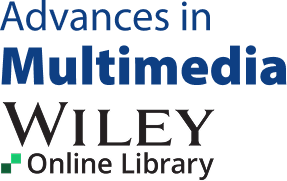All Publications
Journals
Progressively learned musical ability predicts cognitive transfer in older adult novices: A 12- month musical instrument training programme
Objective demonstration and quantitation of musical learning in older adult novices across a 12-month online study.
MoodyTunes: A single cohort study of a music-based smartphone app for mental health and mood regulation in young people
Meaning in music framed: The four ‘Eff’ processes (Fit, Affiliation, Facilitation, and Fluency)
Musical activity as avoidance-based emotion regulation during the COVID-19 pandemic: Evidence across continents.
Calming effects of repetition in music for children with sensory sensitivities: Findings from two experimental studies.
AMMRI: A computational assessment tool for music novice students’ replication and improvisation tasks.
Going online: Successes and challenges in delivering group music learning for older adult novices during the COVID-19 pandemic.
The magnetic urtext: Restoration as music interpretation.
Creativity in lockdown: Understanding how music and the arts supported mental health during the COVID-19 pandemic by age group.
Increasing music preference through guided self-framing: A comparison of historical and imaginative approaches.
MoodyTunes: A mixed methods usability study of an app for adolescent mental health.
Encouraging help-seeking and engagement in a mental health app: What young people want.
Illuminating music: Impact of color hue for background lighting on emotional arousal in piano performance.
A workflow and digital filters for correcting speed and equalization errors on digitized audio open-reel magnetic tapes.
The role of artistic creative activities in navigating the COVID-19 pandemic in Australia.
Multimedia archives: New digital filters to correct equalization errors on digitized tape.
Imaginative enrichment produces higher preference for unusual music than historical framing: A literature review and two empirical studies.
Psycho-historical contextualization for music and visual works: A literature review and comparison between artistic mediums.
Unusualness as a predictor of music preference.
Emptying rooms: When the inverted-U model of preference fails—An investigation using music with collative extremes.
Using psychological principles of memory storage and preference to improve music recommendation systems.
Back to the inverted-U for music preference: A review of the literature.
Performing lieder: Expert perspectives and comparison of vibrato and singer’s formant with opera singers.
Peer-reviewed & Published Conference Proceedings
Knocking on a yellow door: Interactions among knocking sounds, colours, and emotions.
A workflow and novel digital filters for compensating speed and equalization errors on digitized audio open-reel tapes.
Key clarity is blue, relaxed, and maluma: Machine learning used to discover cross-modal connections between sensory items and the music they spontaneously evoke.
Quelle voci poco fa: l’intelligenza artificiale a contrastare l’eclisse delle memorie sonore.
A simple algorithm for music recommendation, built on established psychological principles.
Remembering the forgetting curve: A simulation and new explanation of the inverted-U preference trajectory for exposure to music.
Non-traditional Research Outputs
Music playlists for people with dementia: A guide for carers, health workers, and family. (www.musicfordementia.com.au).
Public Media Outputs
What art are you engaging with in lockdown? Australians are mostly watching TV – but music, singing and dancing do more for your mood.
Lockdown boost: The activities that improve your mood the most.
What art are you engaging with in lockdown?
88.3 Southern FM Radio interview.
Engaging with art to improve your mood in lockdown.
‘I get completely lost in it’: Why more people are tuning in to music lessons.
Other Outputs
Calming effects of repetition for children with sensory sensitivities
Vocalists and wobblers.
Examining older adult cognition, motor function, and musical aptitude across a longitudinal music education program.
Impacts of improvisation as a component of novice music learning in older people.
Surfing the pleasure sea: Neurobiological principles of music enjoyment proposed for recommendation systems and wellbeing.
Quantifying relationships among terms describing powerfully positive affect experience.
Creativity in learning a musical instrument during older adulthood.
Developing beneficial musical interventions for older adult novices.
Introductory video series to PsychTestR: A guide for running online experiments during COVID-19.
Maintaining active minds and bodies through online music reproduction and improvisation classes.
The Active Minds Music Ensemble: Running group music lessons for older adults in-person and online.
The Active Minds Music Ensemble: Experiences online and in-person.
Colors of the music: Emotional enhancement of music performance through stage lighting.
PitchDraw: A dual axis pitch association training app for novice musical instrument learners.
Guide to creating a server for online R experiments using psychTestR.
PsychTestR: An interface for online experiments using R.
The Active Minds Music Ensemble: Older adult music instrument learning.
Psycho-historical contextualization versus imaginative engagement for music preference.
Theory, data, and application of psychological principles for music preference
The new U: Music preference is an inverted-U as a function of exposure by reinventing the Ebbinghaus memory retention curve
Beyond similarity: Applying collative variables and the inverted-U to music recommendation systems.
contact me





